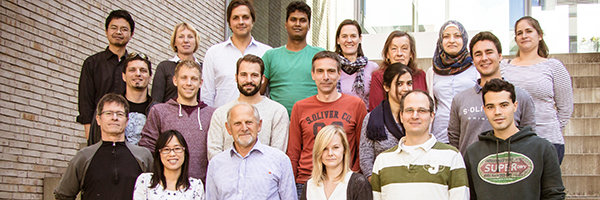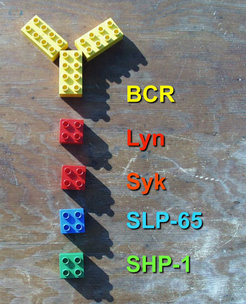
Signal Processes in B Cells: from Analysis to Synthesis
Over the last two decades, more than 100 components have been discovered to be part of the diverse signalling pathways connected to the BCR. How can we ever reach a comprehensive understanding of such a complex signalling system that is essential for the normal life of B cells and whose malfunction is associated with many human diseases. The loss-of-function approaches (knock-out) prominently conducted in recent years gave important clues about the biological role of each signalling element but failed to reveal, in detail, the signalling mechanisms of these elements. For this, the rebuilding of minimal functional signalling systems is a new powerful tool stemming from the field of synthetic biology.

We have developed a method allowing the transient and inducible co-expression of up to 12 genes in the S2 Drosophila cell line.
To better understand signals from the B cell receptor (BCR), we have chosen a synthetic biology approach involving the transient expression of numerous BCR-signalling components in the evolutionarily distant environment of S2 drosophila cells.
With this synthetic biology approach, we have rebuilt the BCR and its proximal signalling elements and obtained insight into the working principles of these molecules. In this way, we discovered that a direct positive-(BCR/Syk)-feedback amplifies the signal of the BCR once its meet its cognate antigen. We then made the surprising discovery that Syk is a dual-specific kinase that can switch from tyrosine to serine phosphorylation, thus reversing its role from activation to suppression of BCR signalling (our paper describing these results was chosen as a signalling breakthrough of the year 2011). We are currently using the same methods to study the diverse ways that the cytoskeleton is associated with the resting and activated BCR. Furthermore, we are developing a toolbox of remotely regulated signalling switches and signal detectors.
